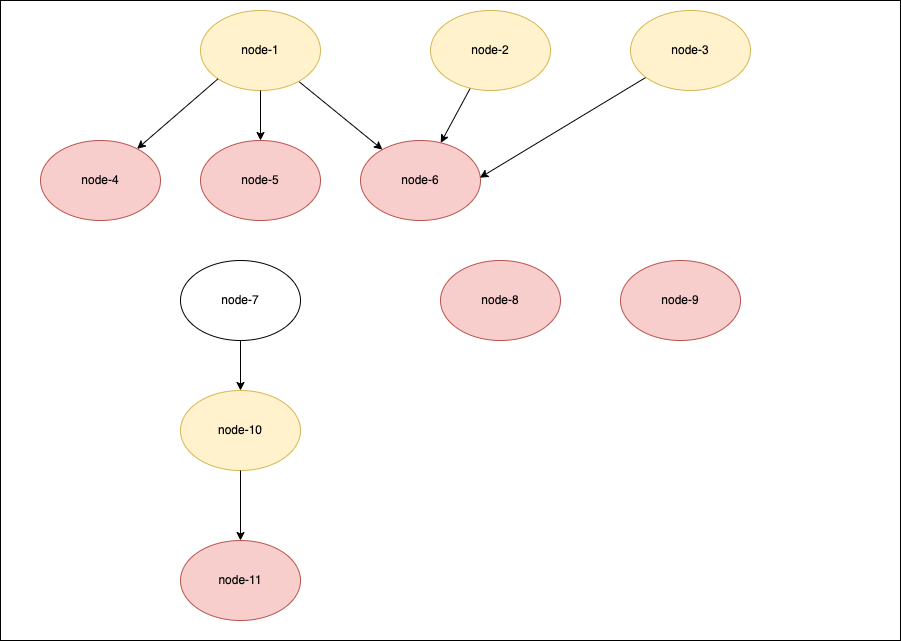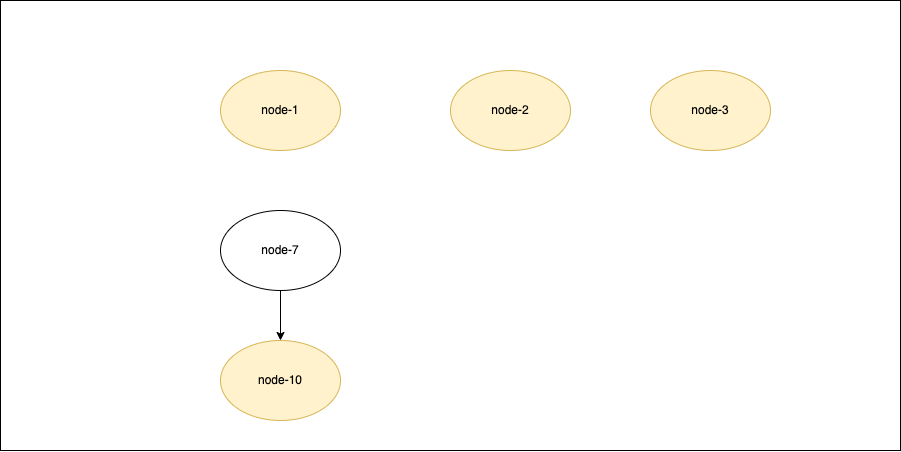rekha-chitra ( रेखा-चित्र in Devanagari script) roughly translates to Graph within limited context. This is a
simple graph library written in Go. It provides simple APIs to create and manipulate graphs.
It is a work in progress and is not ready for production use.
- Uses adjacency list representation for graphs. i.e. map[string]Dependents where
type Dependents map[string]bool - Provides APIs to create graph, add or replace a node, delete a node along with its edges, find candidates (think of them as leaves in a tree)
- It is concurrent safe. It uses
sync.RWMutexto protect the graph data structure while both reading and updating the graph - Keeps things simple by not providing any fancy algorithms to traverse the graph. It is left to the user to implement their own algorithms
- The library relies on user's judgement to ensure that the graph is acyclic. It does not provide any mechanism to detect cycles.
- The library assumes that the graph is created correctly. It does not provide any mechanism to validate the graph structure.
Below is an illustration of a graph with nodes marked from node-1 .. node-10. These nodes are connected to each other
via arrows. The arrows indicate the direction of the connection. For example, node-1 is connected
to node-4, node-5, node-6. The head of the arrow points to the dependents of source node. It means that node-1
cannot be processed until the 3 dependent nodes are processed and removed from the graph.
- All the nodes marked in color
redare the initial set of prune candidates. - All prune candidates that can be processed in parallel.
- Once a node is processed, it should be removed from the graph along with its edges.
- This results in a new set of prune candidates. The new set of prune candidates are marked in color
yellow. - The process continues until the graph is empty.
GetPruneCandidates()->node-4,node-5,node-6,node-8,node-9,node-11
Let us prune all the candidates.
PruneNodes(node-4, node-5, node-6, node-8, node-9, node-11)
GetPruneCandidates()->node-1,node-2,node-3,node-10
Let us prune all the candidates.
PruneNodes(node-1, node-2, node-3, node-10
GetPruneCandidates()->node-7
Let us prune all the candidates.
PruneNodes(node-7)
See code comments


